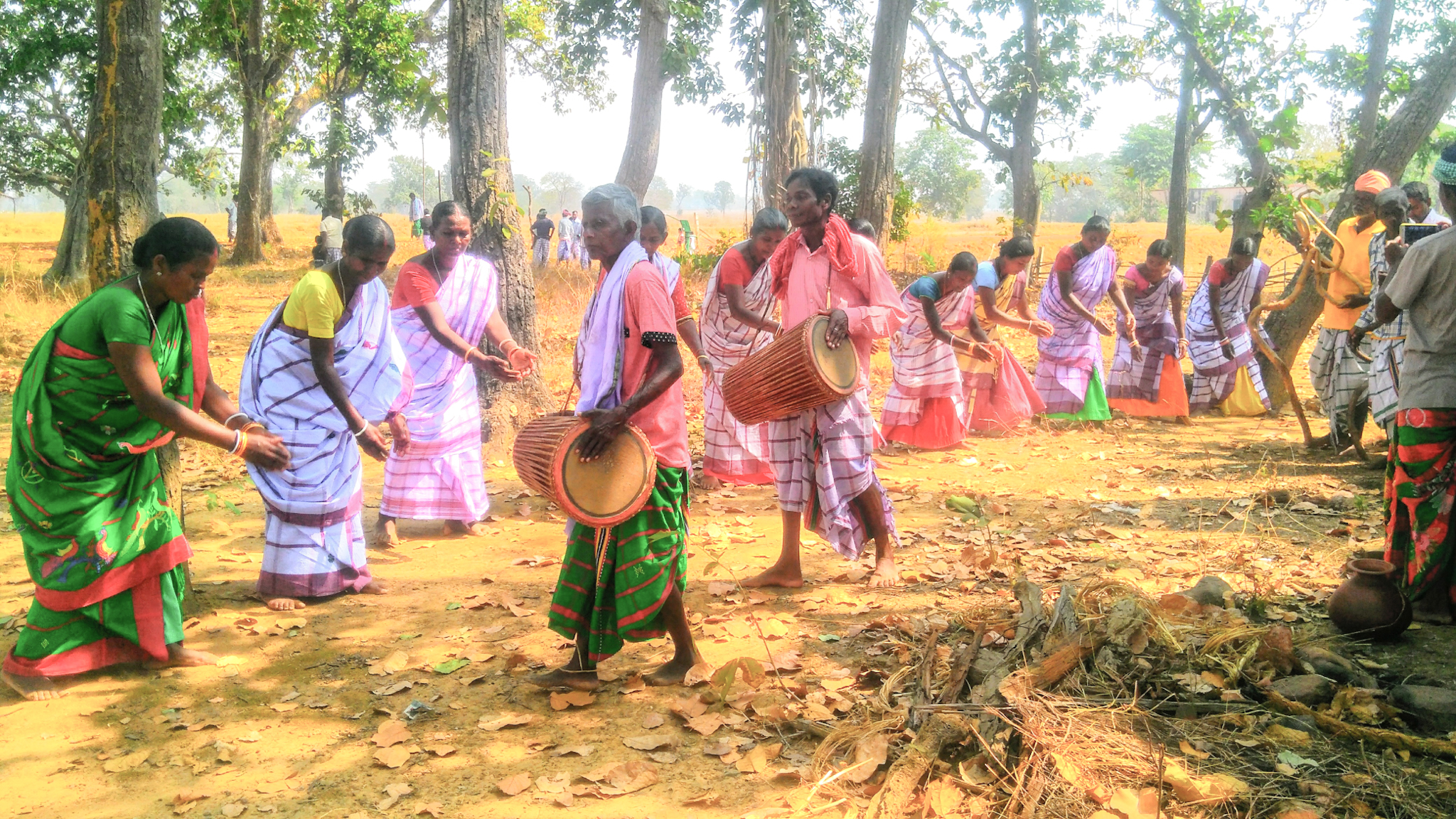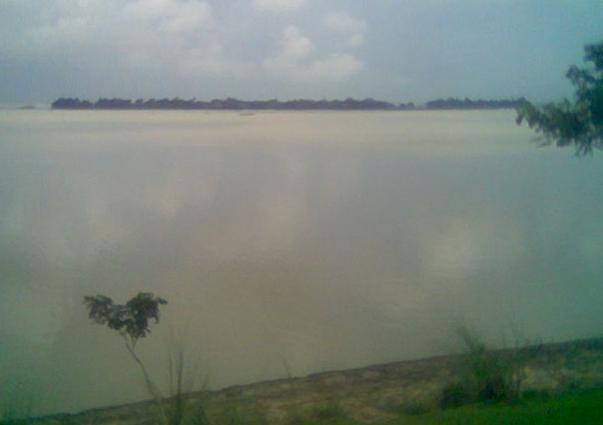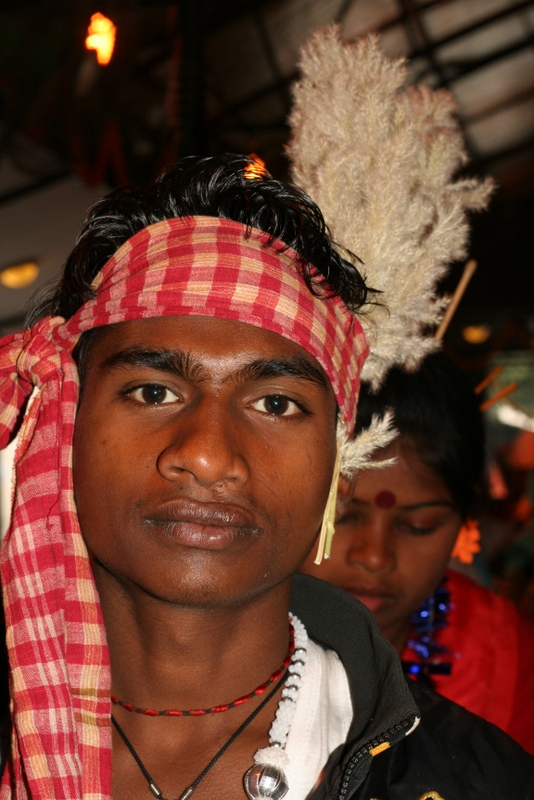|
Santali People
The Santal or Santhal are an Austroasiatic speaking Munda ethnic group in South Asia. Santals are the largest tribe in the Jharkhand and West Bengal state of India in terms of population and are also found in the states of Odisha, Bihar and Assam. They are the largest ethnic minority in northern Bangladesh's Rajshahi Division and Rangpur Division. They have a sizeable population in Nepal. The Santals speak Santali, the most widely spoken Munda languages of Austro-asiatic language family. Etymology Santal is most likely derived from an exonym. The term refers to inhabitants of in erstwhile Silda in Medinapore region in West Bengal. The sanskrit word ''Samant'' or Bengali ''Saont'' means plain land. Their ethnonym is ("sons of mankind"). History Origins According to linguist Paul Sidwell, Austro-Asiatic language speakers probably arrived on coast of Odisha from Indochina about 4,000–3,500 years ago. The Austroasiatic speakers spread from Southeast Asia and mixed exte ... [...More Info...] [...Related Items...] OR: [Wikipedia] [Google] [Baidu] |
Baha Parab
Baha parab or Baa parab is a spring festival of Ho, Santhal and other tribes in India. "Baha" or "Baa" means flower. At Baha parab or Baa parab men, women and children are attired in traditional clothes, Offering Flowers to God ''Marang Buru'' and ''Jaher Ayo'', and Madal tamak(drums) are beat and tribal woman and man dancing. Ritual Marking the festival, the ''naikey'' or ''deurey'' (the priest) performs a ritual. A kula with flowers and leaves of the sal tree is offered to a Jaherthan (the altar) and devotees pray to "Jaher Ara", the god. After performing the rituals, the naikey along with others goes from door to door with the kula to bless everyone. People in the household, in particular young girls or women, offer food to the naikey. The naikey's feet are washed with water as he is welcomed by a family. After performing the rituals, the second part of programme start with dances, songs and archery practice.Bharater adibasi, samaj References Further reading * * External ... [...More Info...] [...Related Items...] OR: [Wikipedia] [Google] [Baidu] |
Munda People
The Munda people are an Austroasiatic speaking ethnic group of India. They predominantly speak the Mundari language as their native language, which belongs to the Munda subgroup of Austroasiatic languages. The Munda are found mainly concentrated in the south and East Chhotanagpur Plateau region of Jharkhand, Odisha and West Bengal. The Munda also reside in adjacent areas of Madhya Pradesh as well as in portions of Bangladesh, Nepal, and the state of Tripura. They are one of India's largest scheduled tribes. Munda people in Tripura are also known as Mura. Etymology Munda means headman of village in Munda-Makni system to govern villages in South-east Chotanagpur. They call themselves hodoko or horo means ''men''. Robert Parkin notes that the term "Munda" did not belong to the Austroasiatic lexis and is of Sanskrit origin. According to R. R. Prasad, the name "Munda" is a Sanskrit word means "headman". It is an honorific name given by Hindus and hence became a tribal name. ... [...More Info...] [...Related Items...] OR: [Wikipedia] [Google] [Baidu] |
Munda Languages
The Munda languages are a group of closely related languages spoken by about nine million people in India and Bangladesh. Historically, they have been called the Kolarian languages. They constitute a branch of the Austroasiatic language family, which means they are more distantly related to languages such as the Mon and Khmer languages, to Vietnamese, as well as to minority languages in Thailand and Laos and the minority Mangic languages of South China. Bhumij, Ho, Mundari, and Santali are notable Munda languages. The family is generally divided into two branches: North Munda, spoken in the Chota Nagpur Plateau of Jharkhand, Chhattisgarh, West Bengal, and Odisha, and South Munda, spoken in central Odisha and along the border between Andhra Pradesh and Odisha. North Munda, of which Santali is the most widely spoken, has twice as many speakers as South Munda. After Santali, the Mundari and Ho languages rank next in number of speakers, followed by Korku and Sora. Th ... [...More Info...] [...Related Items...] OR: [Wikipedia] [Google] [Baidu] |
Nepal
Nepal (; ne, :ne:नेपाल, नेपाल ), formerly the Federal Democratic Republic of Nepal ( ne, सङ्घीय लोकतान्त्रिक गणतन्त्र नेपाल ), is a landlocked country in South Asia. It is mainly situated in the Himalayas, but also includes parts of the Indo-Gangetic Plain, bordering the Tibet Autonomous Region of China China–Nepal border, to the north, and India India–Nepal border, in the south, east, and west, while it is narrowly separated from Bangladesh by the Siliguri Corridor, and from Bhutan by the States and union territories of India, Indian state of Sikkim. Nepal has a Geography of Nepal, diverse geography, including Terai, fertile plains, subalpine forested hills, and eight of the world's ten List of highest mountains#List, tallest mountains, including Mount Everest, the highest point on Earth. Nepal is a multi-ethnic, multi-lingual, multi-religious and multi-cultural state, with Nepali langua ... [...More Info...] [...Related Items...] OR: [Wikipedia] [Google] [Baidu] |
Rangpur Division
Rangpur Division ( bn, রংপুর বিভাগ) is one of the Divisions in Bangladesh. It was formed on 25 January 2010, as Bangladesh's 7th division. Before that, it was under Rajshahi Division. The Rangpur division consists of eight districts. There are 58 Upazilas or subdistricts under these eight districts. Rangpur is the northernmost division of Bangladesh and has a population of 15,665,000 in the 2011 Census. The major cities of this new division are Rangpur, Saidpur and Dinajpur. Rangpur has well-known educational institutions, such as Carmichael College, Hajee Mohammad Danesh Science and Technology University, Rangpur Medical College, Rangpur Cadet College, Begum Rokeya University and Bangladesh Army University of Science and Technology, Saidpur. Mansingh, commander of Emperor Akbar, conquered part of Rangpur in 1575. Rangpur came completely under the Mughal empire in 1686. Mughalbasa and Mughalhat of Kurigram district still bear marks of the Mughal rule i ... [...More Info...] [...Related Items...] OR: [Wikipedia] [Google] [Baidu] |
Rajshahi Division
Rajshahi Division ( bn, রাজশাহী বিভাগ) is one of the eight first-level administrative divisions of Bangladesh. It has an area of and a population at the 2011 Census of 18,484,858. Rajshahi Division consists of 8 districts, 70 Upazilas (the next lower administrative tier) and 1,092 Unions (the lowest administrative tier). The region has historically been dominated by various feudal Rajas, Maharajas and Zamindars. Formerly comprising 16 districts, a new division (Rangpur Division) was formed with the 8 northern districts of the old Rajshahi Division from early 2010. Etymology and names The Rajshahi Division is named after Rajshahi District. Dominated by various feudal Rajas, Maharajas and Zamindars of mixed origins throughout history, the name is a compound of the words ''Raj'' and ''Shahi'', both of which can be translated into reign or kingdom. Archaic spellings in the English language also included ''Rajeshae''. The capital city of the division was f ... [...More Info...] [...Related Items...] OR: [Wikipedia] [Google] [Baidu] |
South Asia
South Asia is the southern subregion of Asia, which is defined in both geographical Geography (from Greek: , ''geographia''. Combination of Greek words ‘Geo’ (The Earth) and ‘Graphien’ (to describe), literally "earth description") is a field of science devoted to the study of the lands, features, inhabitants, and ... and culture, ethno-cultural terms. The region consists of the countries of Afghanistan, Bangladesh, Bhutan, India, Maldives, Nepal, Pakistan, and Sri Lanka.;;;;;;;; Topographically, it is dominated by the Indian subcontinent and defined largely by the Indian Ocean on the south, and the Himalayas, Karakoram, and Pamir Mountains, Pamir mountains on the north. The Amu Darya, which rises north of the Hindu Kush, forms part of the northwestern border. On land (clockwise), South Asia is bounded by Western Asia, Central Asia, East Asia, and Southeast Asia. The South Asian Association for Regional Cooperation (SAARC) is an economic cooperation organiza ... [...More Info...] [...Related Items...] OR: [Wikipedia] [Google] [Baidu] |
Munda Peoples
The Munda peoples of eastern and central parts of the Indian subcontinent are any of several tribal groups who natively speak Munda languages of Austro-asiatic language family, formerly also known as Kolarian, and spoken by about nine million people. History According to linguist Paul Sidwell, Munda languages arrived on the coast of Odisha from Southeast Asia about 4000-3500 years ago. The Munda people spread from Southeast Asia and mixed extensively with local Indian populations. Robert Parkin notes that the term "Munda" did not belong to the Austroasiatic lexis and is of Sanskrit origin. Austroasiatic DNA Mitsuru Sakitani suggests that Haplogroup O1b1, which is common in Austroasiatic people and some other ethnic groups in southern China, and haplogroup O1b2, which is common in today Japanese, Koreans and some Manchu, are the carriers of Yangtze civilization (Baiyue). Another study suggests that the haplogroup O1b1 is the major Austroasiatic paternal lineage and O1b2 th ... [...More Info...] [...Related Items...] OR: [Wikipedia] [Google] [Baidu] |
Austroasiatic Languages
The Austroasiatic languages , , are a large language family in Mainland Southeast Asia and South Asia. These languages are scattered throughout parts of Thailand, Laos, India, Myanmar, Malaysia, Bangladesh, Nepal, and southern China and are the majority languages of Vietnam and Cambodia. There are around 117 million speakers of Austroasiatic languages. Of these languages, only Vietnamese, Khmer, and Mon have a long-established recorded history. Only two have official status as modern national languages: Vietnamese in Vietnam and Khmer in Cambodia. The Mon language is a recognized indigenous language in Myanmar and Thailand. In Myanmar, the Wa language is the de facto official language of Wa State. Santali is one of the 22 scheduled languages of India. The rest of the languages are spoken by minority groups and have no official status. '' Ethnologue'' identifies 168 Austroasiatic languages. These form thirteen established families (plus perhaps Shompen, which is poorly ... [...More Info...] [...Related Items...] OR: [Wikipedia] [Google] [Baidu] |
Bhumij People
Bhumij is a Munda ethnic group of India. They primarily live in the Indian states of West Bengal, Odisha, and Jharkhand, mostly in the old Singhbhum district. Also in states like Bihar and Assam. There is also a sizeable population found in Bangladesh. Bhumijas speak the Bhumij language, an Austroasiatic language, and use Ol Onal script for writing. Overview Etymology Bhumij means "one who is born from the soil" and it is derived from word ''bhūmi'' (a land or soil). According to N. Ramaswani, the word is etymologically ''Bhūm-jo'' meaning "people originating from Bhum areas, i.e. Singhbhum, Dhalbhum, Manbhum, Barabhum, etc.", Dalton also had claimed that Bhumijs were the original inhabitants of Dhalbhum, Barabhum, Patkum and Baghmundi. Social structure Social structure of the Bhumijs is characterised by nuclear family, patriliny, exogamy and hereditary headship of the village community. They follow Hindu practices of succession and inheritance. The Bhumijs are ... [...More Info...] [...Related Items...] OR: [Wikipedia] [Google] [Baidu] |
Korku People
The Korku are a Munda ethnic group predominantly found in the Khandwa, Burhanpur, Betul and Chhindwara districts of Madhya Pradesh and adjoining areas near the Melghat Tiger Reserve of Maharashtra. They speak the Korku language, which is a member of the Munda languages and is written using Devanagari. They are classified as a Scheduled Tribe by the Indian government. Etymology The name ‘Korku’ is originated from two terms ‘Koro’ and ‘Ku’ whereas ‘Koro’ means person and ‘Ku’ means alive. In combination, the two words ‘Koro and Ku’ can be defined as the alive member. The Korkus are a Munda tribe and live near a Dravidian-speaking tribe — the Gonds. The Korku people are believed to have been initially a hunter-gatherer community who dwelt in the forests of the Satpura Range on both sides of the Tapti River. Dwelling The Korku tribe lives in small groups of huts made of grass and wood. Every household has an elevated stage-like structure at the fr ... [...More Info...] [...Related Items...] OR: [Wikipedia] [Google] [Baidu] |
Savara People
The Sora (alternative names and spellings include Saora, Saura, Savara and Sabara) are a Munda ethnic group from eastern India. They live in southern Odisha and north coastal Andhra Pradesh. The Soras mainly live in Gajapati, Rayagada and Bargarh districts of Odisha. They are also present in Srikakulam, Vizianagaram and Visakhapatnam districts. In the census, however, some Soras are classified under Shabar or Lodha, the name for another very different Munda tribe. They inhabit blocks of Gunupur, Padmapur and Gudari. Their highest concentration is found in the Puttasingi area, approximately 25 km away from Gunupur NAC. Although, they are close to the assimilation process, yet some interior GPs like Rejingtal, Sagada and Puttasingi have Soras who still retain their traditional tribal customs and traditions. They are known by various names such as ''Savara'', ''Sabara'', ''Sora'', and ''Soura''. They are concentrated in parts of Gunupur adjoining to the blocks of Gumma ... [...More Info...] [...Related Items...] OR: [Wikipedia] [Google] [Baidu] |








